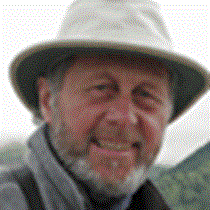Lake Eva and Chatham Strait
Perhaps there are still some who believe that the Wild Turkey would have been a better choice as a national emblem. But not many. Over the years, and as we have come to understand the intricate relationships within our natural ecosystems, the Bald Eagle has been well accepted as representing the strength and spirit of the United States of America. Like so many of our predatory birds and mammals, the Bald Eagle, one of eight species of “sea eagles” in the world, suffered from misguided persecution and indiscriminate killing. Extirpation occurred in many of the southern 48 states. Happily, though, this proud bird is back, continuing on a road to full recovery. Here in the wild and isolated inlets of coastal Alaska, it escaped serious attack and remained relatively abundant, even through the darkest days of man’s economic expansion and casual disregard for the environment. Today, it continues as the dominant bird that we encounter along the coastline of the temperate rain forest.
The individual shown here was not alarmed at our presence. We were paddling our kayaks silently in a picturesque bay on the northeast shore of Baranof Island. Six eagles had gathered on the beach to feed on a salmon. Leaping around us were dozens of other salmon, recently returned from a journey of two or more years in the north Pacific Ocean. They grew rapidly there, had reached maturity, and now were swimming slowly in the brackish waters near their stream of birth. They were undergoing the physiological changes necessary for re-entry into fresh water. Each would soon swim upstream, hopefully to spawn, but then to die. Intercepting them would be eagles, bears and many other vertebrates, all primed for a late summer feast. Like the eagle, though, enough fish would escape, and the five species of Pacific salmon would survive. The annual “migration” of protein and nutrients from the ocean into the streams and forests of the coast would continue.
Killer whales had been our wake-up call this morning. Spread across the calm waters of Chatham Strait was a pod of perhaps 30 or more. They, like the eagles, were seeking salmon. Later in the day, humpback whales appeared, just in time to prime us for a slide-illustrated talk on the ecology and life history of this and other marine mammals of Alaska. Our evening was spent exploring two magnificently silent inlets on the southeast coast of Baranof Island. With each, we were convinced that the excitement, diversity and raw beauty of Southeast Alaska would never end.
Perhaps there are still some who believe that the Wild Turkey would have been a better choice as a national emblem. But not many. Over the years, and as we have come to understand the intricate relationships within our natural ecosystems, the Bald Eagle has been well accepted as representing the strength and spirit of the United States of America. Like so many of our predatory birds and mammals, the Bald Eagle, one of eight species of “sea eagles” in the world, suffered from misguided persecution and indiscriminate killing. Extirpation occurred in many of the southern 48 states. Happily, though, this proud bird is back, continuing on a road to full recovery. Here in the wild and isolated inlets of coastal Alaska, it escaped serious attack and remained relatively abundant, even through the darkest days of man’s economic expansion and casual disregard for the environment. Today, it continues as the dominant bird that we encounter along the coastline of the temperate rain forest.
The individual shown here was not alarmed at our presence. We were paddling our kayaks silently in a picturesque bay on the northeast shore of Baranof Island. Six eagles had gathered on the beach to feed on a salmon. Leaping around us were dozens of other salmon, recently returned from a journey of two or more years in the north Pacific Ocean. They grew rapidly there, had reached maturity, and now were swimming slowly in the brackish waters near their stream of birth. They were undergoing the physiological changes necessary for re-entry into fresh water. Each would soon swim upstream, hopefully to spawn, but then to die. Intercepting them would be eagles, bears and many other vertebrates, all primed for a late summer feast. Like the eagle, though, enough fish would escape, and the five species of Pacific salmon would survive. The annual “migration” of protein and nutrients from the ocean into the streams and forests of the coast would continue.
Killer whales had been our wake-up call this morning. Spread across the calm waters of Chatham Strait was a pod of perhaps 30 or more. They, like the eagles, were seeking salmon. Later in the day, humpback whales appeared, just in time to prime us for a slide-illustrated talk on the ecology and life history of this and other marine mammals of Alaska. Our evening was spent exploring two magnificently silent inlets on the southeast coast of Baranof Island. With each, we were convinced that the excitement, diversity and raw beauty of Southeast Alaska would never end.




